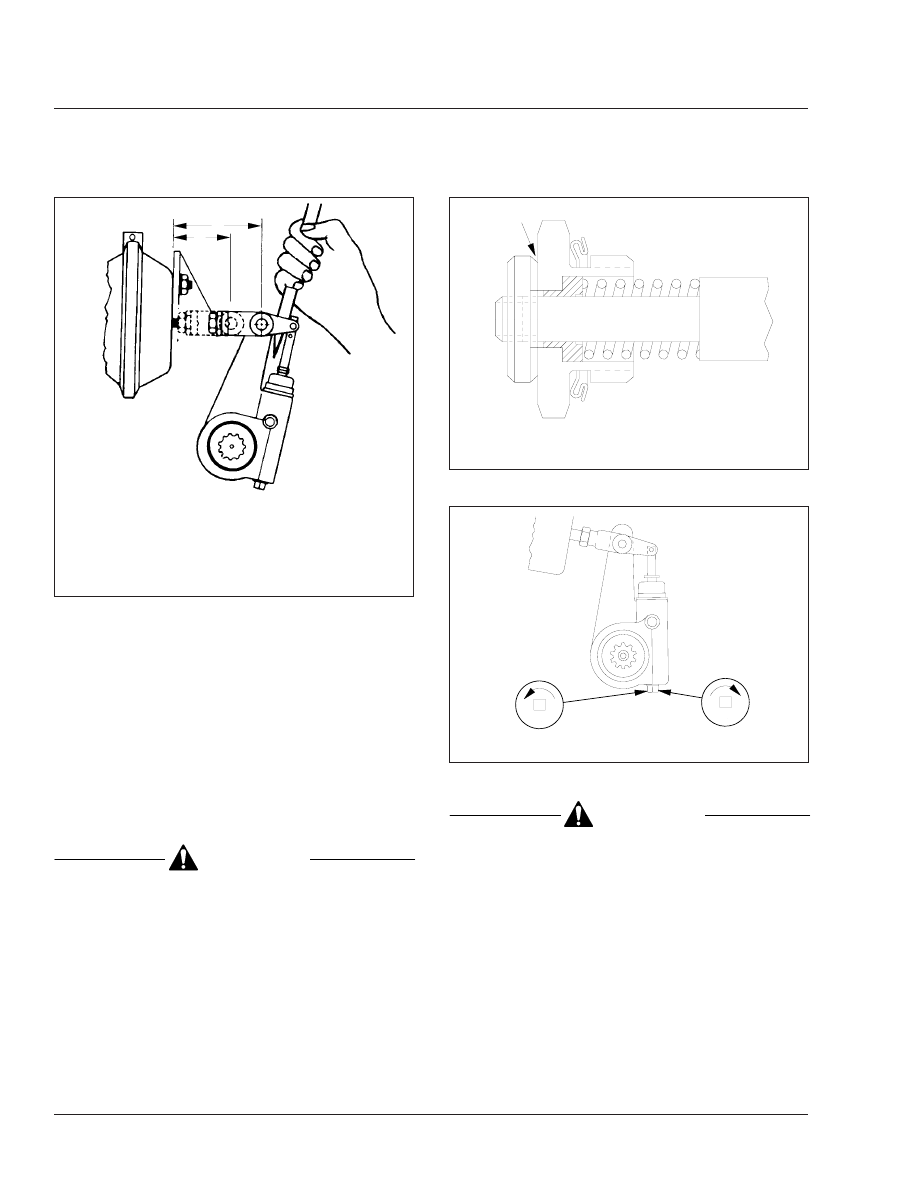Freightliner Cargo Maintenance Manual - part 20

•
drum brakes—5/8 to 3/4 inch (16 to
19 mm);
•
disc brakes—7/8 to 1-1/8 inch (22
to 29 mm).
3.3
If the free-stroke is incorrect, remove the
pressure-relief capscrew, gasket, pawl
spring, and pawl (
, Ref. 5) from the
slack adjuster housing. If equipped with a
pull-pawl assembly (
), carefully in-
sert a screwdriver and raise the relief cap
about 1/8 inch (3.2 mm).
CAUTION
Before turning the adjusting nut, remove the
pressure-relief capscrew, gasket, pawl spring, and
pawl. If equipped with a pull-pawl assembly, raise
the relief cap as instructed. Failure to do so could
strip the teeth on the pawl.
3.4
Turn the adjusting nut one-eighth turn, as
shown in
. Measure the stroke
again, and adjust until correct.
CAUTION
Do not make the adjusted chamber stroke too
short. The free-stroke must not be less than the
measurements given previously. If the chamber
stroke is too short, the linings can drag, which
could damage the brake.
3.5
If removed, install the pawl, pawl spring,
gasket, and pressure-relief capscrew.
Tighten the capscrew 15 to 20 lbf·ft (20 to
27 N·m). Or, remove the screwdriver from
the pull-pawl assembly (if equipped).
4.
Check for correct brake chamber stroke.
A
B
09/27/94
f420180a
NOTE: For a drum brake, A minus B must equal 5/8 to
3/4 inch (16 to 19 mm). For a disc brake, A minus B
must equal 7/8 to 1-1/8 inch (22 to 29 mm).
A. With the brakes applied, measure this distance.
B. With the brakes released, measure this distance.
Fig. 5, Measuring Free-Stroke
f420693a
09/27/94
A
A. Insert screwdriver here.
Fig. 6, Pull-Pawl Assembly (sectional view)
A
B
f420181a
07/05/95
A. Shorten stroke.
B. Lengthen stroke.
Fig. 7, Brake Stroke Adjusting
Brakes
42
Cargo Maintenance Manual, January 2000
42/6